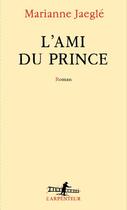Résumé:
Appropriate use criteria in echocardiography are essential tools for aligning indications of echocardiography with the best clinical standards, improving clinical outcome, restraining abuse and preserving healthcare resources. Assessment of 501 inpatients who received transthoracic cardiac echo... Voir plus
Appropriate use criteria in echocardiography are essential tools for aligning indications of echocardiography with the best clinical standards, improving clinical outcome, restraining abuse and preserving healthcare resources. Assessment of 501 inpatients who received transthoracic cardiac echo was conducted according to the 2011 appropriate use criteria report. Indications were classified as appropriate, uncertain or inappropriate, and patients not matching any of the above divisions were grouped in the non-fitting category. Of the 501 eligible patients, 374 (74.65%) were in the appropriate group, 85 (16.96%) in the inappropriate group, 20 (3.99%) in the uncertain group and 22 (4.39%) in the non-fitting category. Interpretation and analysis of the obtained results are presented, along with results of many comparable studies; moreover, a quality improvement project was set up accordingly. Appropriate use criteria are useful to assess local practice, to preserve healthcare resources, and to improve clinical outcome.
Donner votre avis














